Vallone dei Mulini, the kingdom of the Sorrentine ferns
The sense of place. Sorrento between nature and culture
Historical and cultural background
The Vallone dei Mulini is one of the best-known places in Sorrento, a true topos that allows a journey through time, but also through the imagination. For centuries, there have been various owners, including the Tasso family and the Correale family. It was one of the members of this family, Onofrio, who, in the 17th century, had a port built at the mouth of the valley, in what is now Marina Piccola, but which was once called Capo Cervo or Capo di Cerere, due to the presence of an ancient Roman temple dedicated to Ceres and later destroyed by two landslides in 1580 and 1604. The history of this canyon changed radically in 1866, when it was decided to remove the bridge that allowed access into the town and to replace it with a square, so the gorge was gradually filled in. In this way, the Vallone dei Mulini found itself divided in two: on the one hand, the opening to the sea, then occupied by the road to the port, and on the other, the small industrial complex that ceased to function at the beginning of the 20th century, mainly because the total absence of wind greatly increased the humidity, which constantly hovers around 80%.
Physical characteristics
This canyon originated around 39,000 years ago, following the violent eruption of the Phlegraean Fields that covered the area from Punta Scutolo to Capo di Sorrento with tufa. The waters of the Casarlano and Sant'Antonino streams, flowing from the hills behind and meeting at this point, over time carved a deep, narrow gorge in search of an outlet to the sea. Exploiting these very waters, various activities have been carried out here over the centuries, such as one or more mills used to grind grain to be sold to the Sorrentines, as well as a sawmill, which processed cherry, olive, and walnut wood, later used by the city's craftsmen, and, finally, a public washhouse: this was a true proto-industrial area, the ruins of which are still visible.
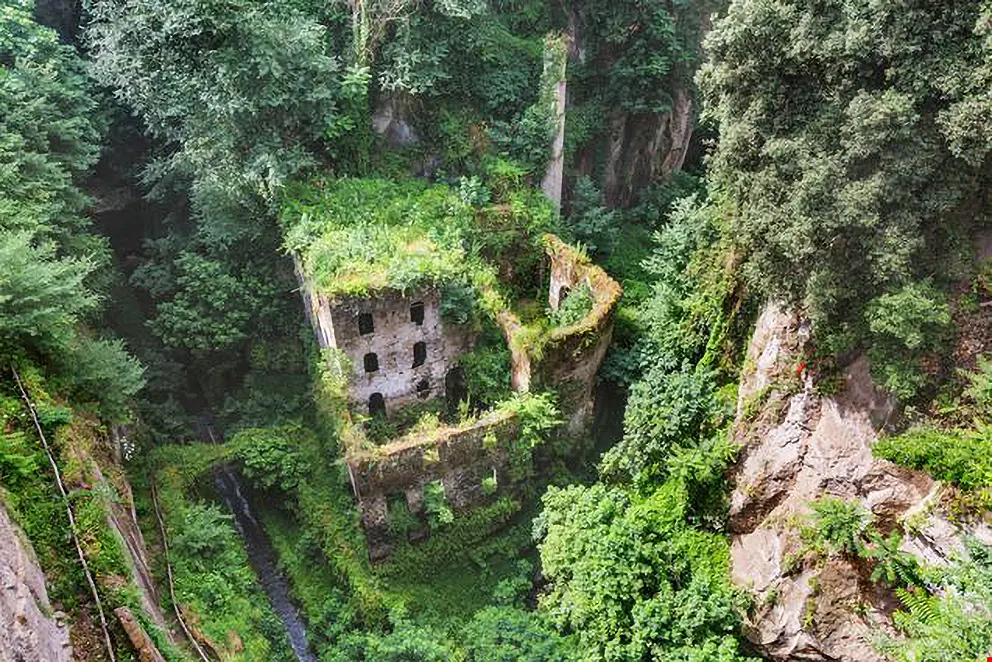
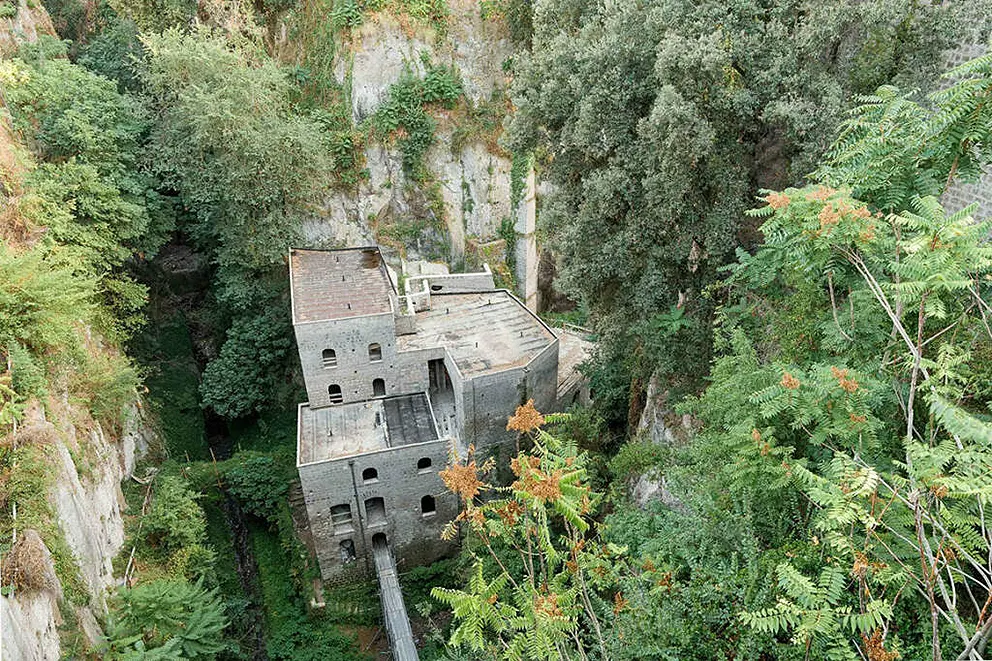
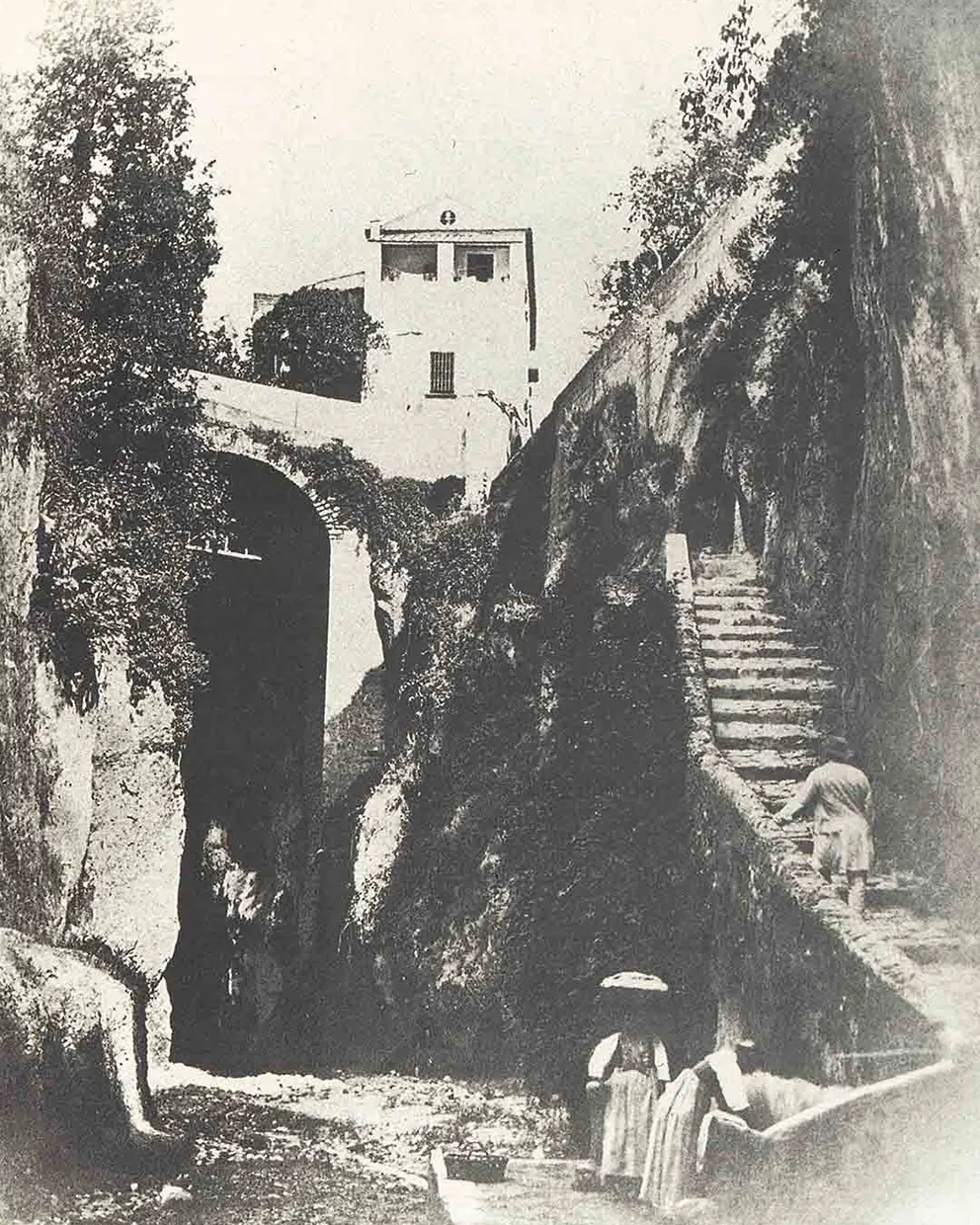
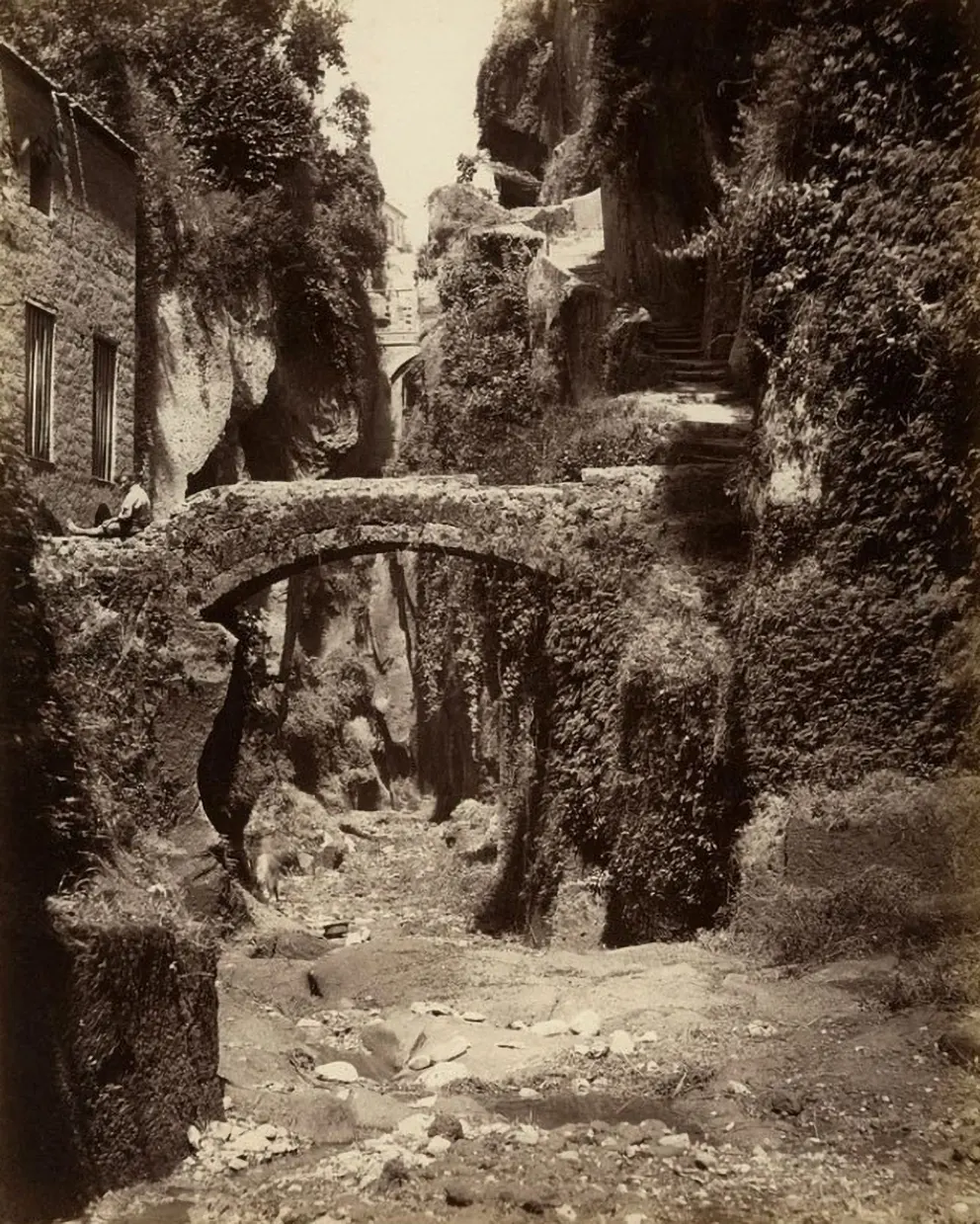
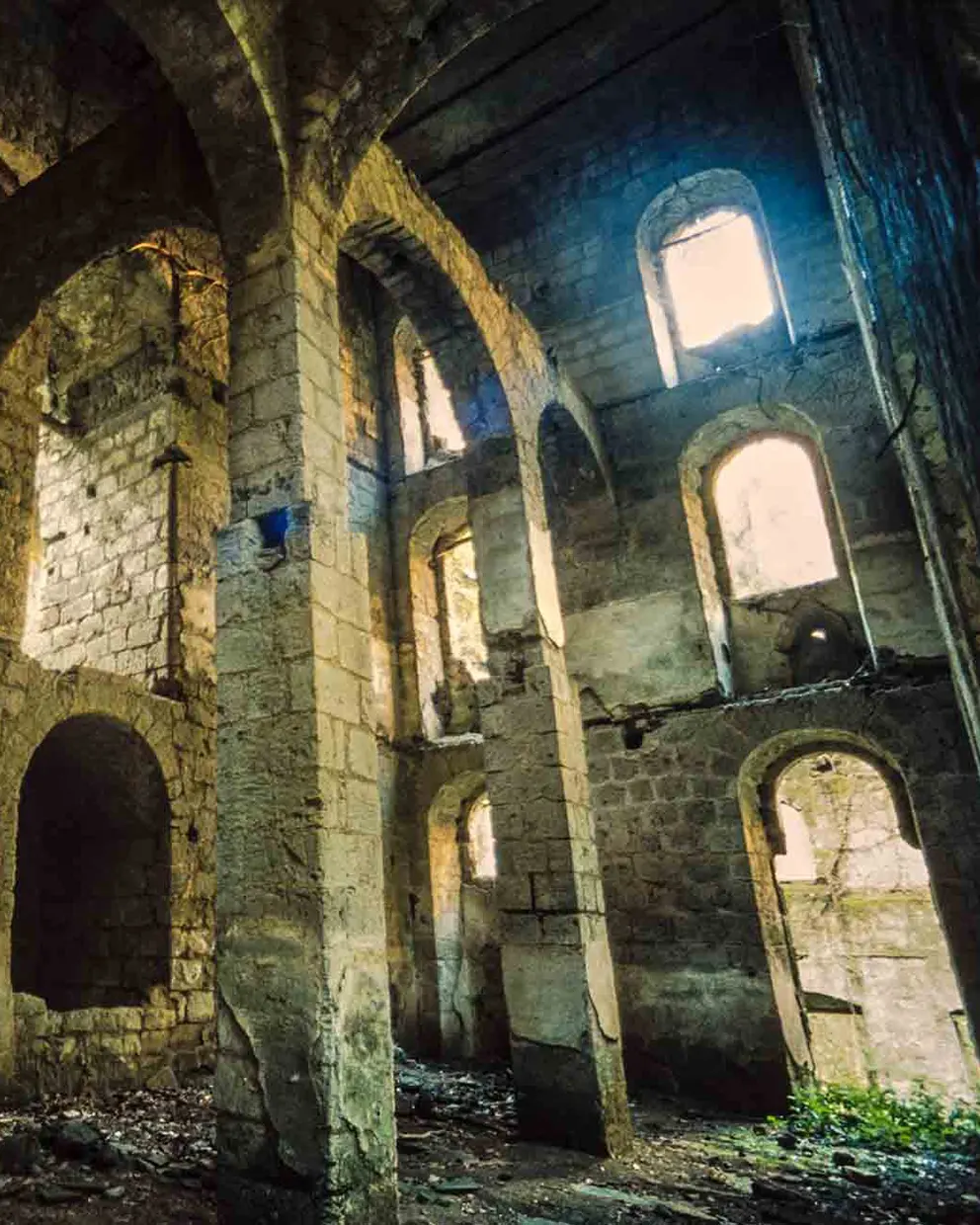
Botanical specificities
The artificial barrage of Piazza Tasso, built in the second half of the 19th century, made it impossible for humans to inhabit the site. However, this has allowed the proliferation of plant biodiversity, such as capers on the tuffaceous cliff sides of the cliff and some forms of carnivorous plants on the bottom, up to some that are considered rare or have almost completely disappeared, such as ‘Phyllitis vulgaris’, an evergreen fern commonly called ‘deer tongue’. As botanists have observed, there are two varieties of this fern: ‘Phyllitis Scolopendrium’ and ‘Phyllitis Scolopendrium regalia’, the latter being very elegant and lush.
Faunal peculiarities
The microclimate of the Vallone dei Mulini, radically changed with the obstruction of Piazza Tasso, reaches 80% humidity, which remains constant throughout the year, with few variations as the seasons change. This has conditioned the presence of certain animals, such as those known as ‘homeotherms’, i.e., those that are able to maintain a constant body temperature, around 37° C [99° F] for mammals and around 40° C [104° F] for birds, e.g., bats, and nocturnal birds of prey. There are also other specimens, such as a few hedgehogs and some spotted salamanders.

